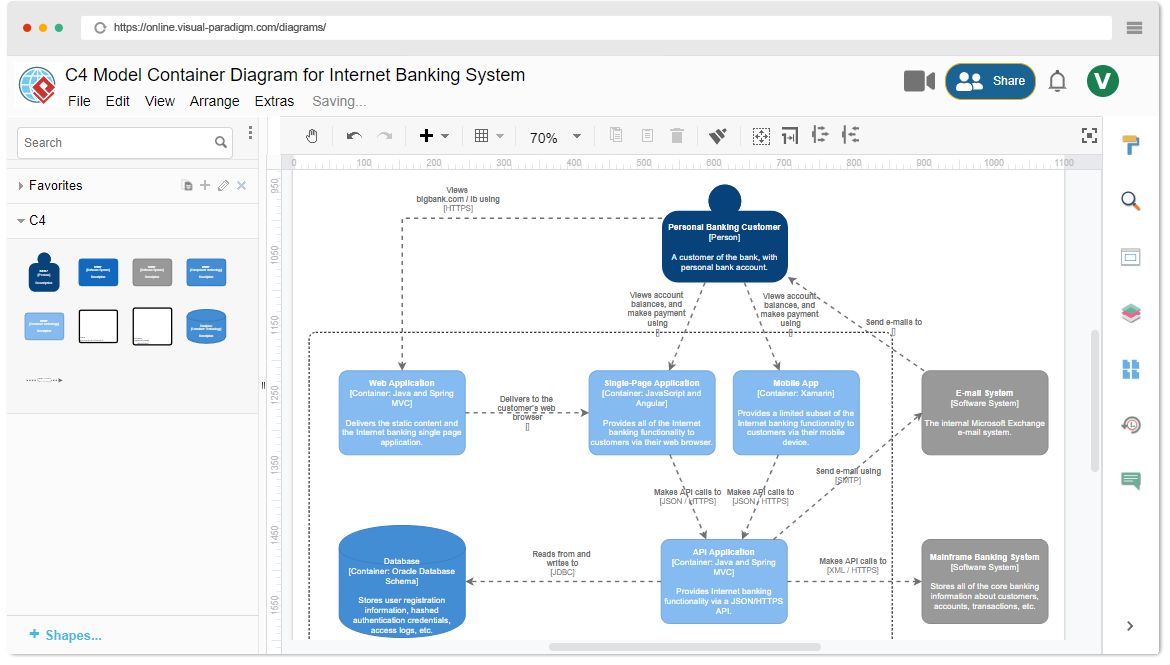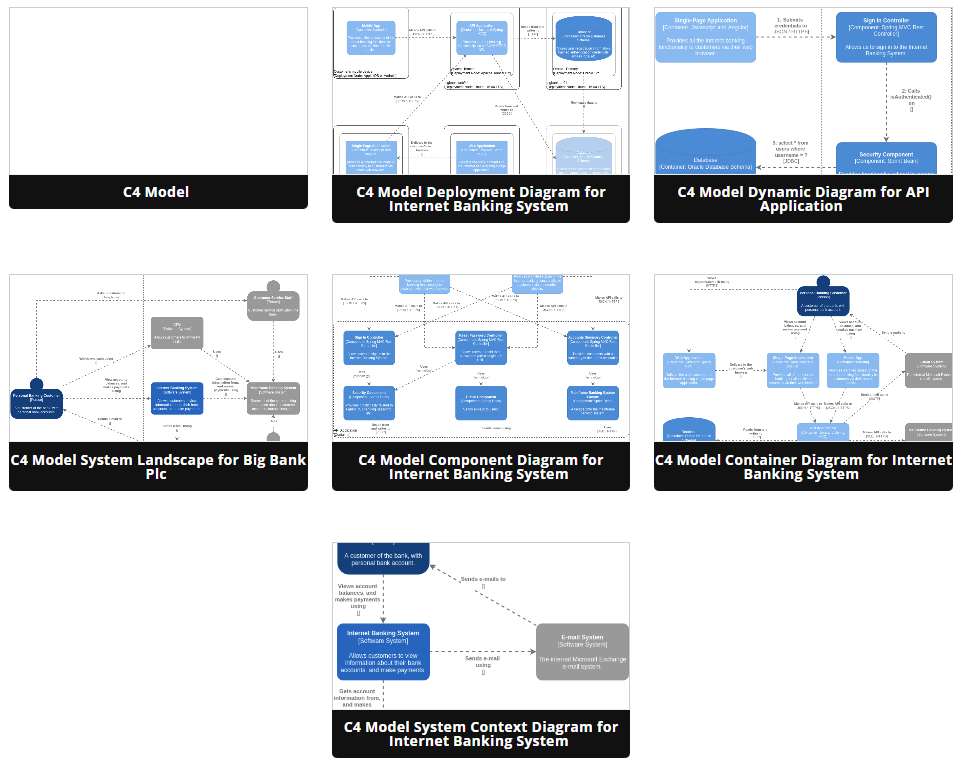Beginner’s Guide to C4 Model Diagrams
Introduction
The C4 model is a powerful graphical notation technique for modeling the architecture of software systems. Developed by software architect Simon Brown, this method provides a clear and concise way to document and communicate software architecture. In this beginner’s guide, we’ll introduce you to the C4 model and show you how to learn it using the large collection of templates available in Visual Paradigm Online.
What is the C4 Model?
The C4 model is based on a structural decomposition of a software system into containers and components. It allows you to visualize the architecture of your system by breaking it down into its fundamental building blocks. This method builds upon established modeling techniques such as the Unified Modeling Language (UML) and Entity Relation Diagrams (ERD) to provide a higher-level architectural view.

History of the C4 Model
The C4 model was developed by Simon Brown between 2006 and 2011, drawing inspiration from UML and the 4+1 architectural view model. In 2018, it gained wider recognition with the launch of an official website under a Creative Commons license and the publication of an article that popularized this emerging technique.
Overview of the C4 Model
The C4 model allows you to document the architecture of a software system from various viewpoints, helping you understand its structure and relationships. These viewpoints are organized hierarchically:
- Context Diagrams (Level 1): These diagrams show the system in scope and its relationships with users and other external systems. They provide a high-level overview of the system’s context.
- Container Diagrams (Level 2): Container diagrams decompose the system into interconnected containers. A container can represent an application or a data store. These diagrams offer a more detailed view of the system’s structure.
- Component Diagrams (Level 3): Component diagrams further decompose containers into interrelated components. Components can be software modules, classes, or other building blocks. This level provides insights into the internal composition of containers.
- Code Diagrams (Level 4): At this level, you delve into the design details of architectural elements that can be mapped to code. These diagrams leverage existing notations like UML or ERD and are often generated by Integrated Development Environments (IDEs).
Key Elements of C4 Diagrams
The C4 model uses five basic diagramming elements throughout levels 1 to 3:
- Persons: Represent users or external entities interacting with the system.
- Software Systems: Depict the high-level software systems or applications.
- Containers: Represent applications or data stores within the system.
- Components: Show detailed software components within containers.
- Relationships: Indicate how these elements are connected and interact with each other.
Using C4 Model Templates in Visual Paradigm Online
To get started with the C4 model, you can make use of some templates available in Visual Paradigm Online. Here’s how you can learn by examples
- Access Visual Paradigm Online: If you don’t already have an account, sign up for Visual Paradigm Online or log in to your existing account.
- Select C4 Model Templates: Visual Paradigm Online provides a wide range of C4 model templates. Browse through the template library and select the one that matches your project’s needs.
- Customize Templates: Once you’ve chosen a template, customize it by adding your system’s specific elements, relationships, and labels. Visual Paradigm Online makes it easy to edit and adjust diagrams.
- Collaborate and Share: Invite your team members to collaborate on the diagrams. Visual Paradigm Online allows real-time collaboration, making it easy for everyone to contribute to the architectural documentation.
- Export and Share: Export your diagrams in various formats such as PDF, PNG, or share them directly with stakeholders. This ensures that your architecture documentation is accessible to the intended audience.
Conclusion
The C4 model is a valuable tool for software architects and developers to document and communicate software system architecture effectively. By using templates in Visual Paradigm Online, you can quickly grasp the concepts and start creating your own C4 diagrams, fostering collaborative visual architecting and evolutionary architecture within your agile teams.

